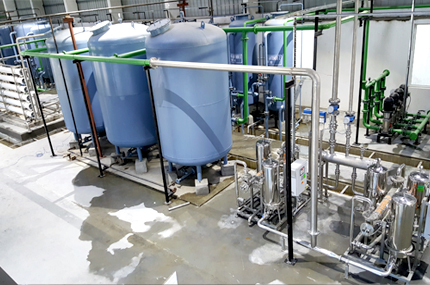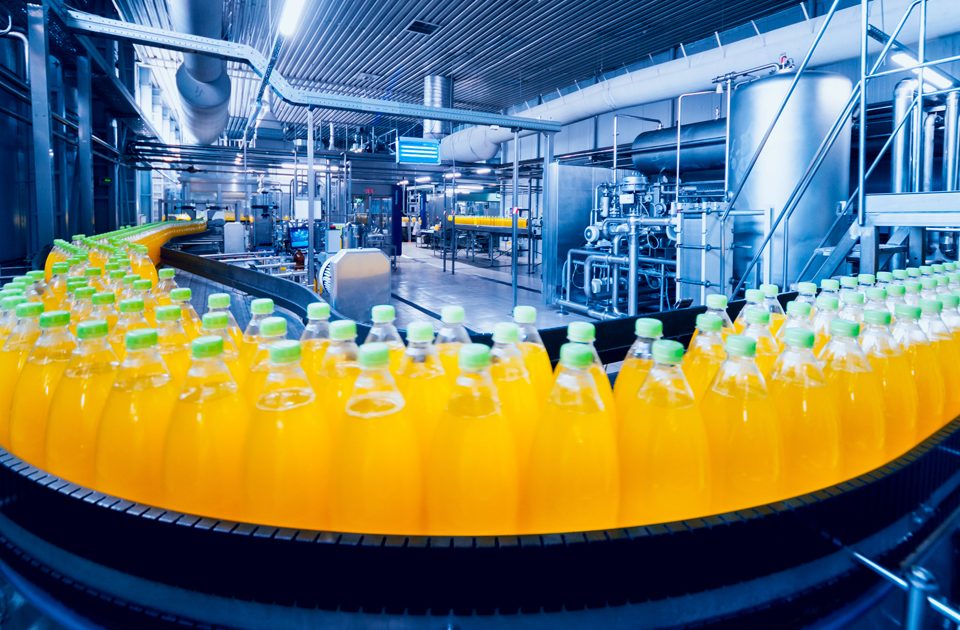
Emerging Trends in Water Treatment Technology for 2024 and Beyond
June 9, 2025
How Water Treatment Plants Support Compliance with Environmental Regulations
June 10, 2025Welcome to a deep dive into the world of water contaminants – an essential topic for keeping your family safe and healthy. Water is vital for life, but when it comes to contaminants lurking in our drinking water, knowledge truly is power. Let’s explore the common types of water pollutants, their sources, health effects, how to test for them, ways to remove them, and practical prevention tips. Stay informed and empowered as we navigate the waters together!
Common Types of Water Contaminants
Water contaminants come in various forms, each posing different risks to our health. Chemical contaminants include pesticides, industrial chemicals, and pharmaceuticals that can seep into water sources from agricultural runoff or improper disposal. These substances can have adverse effects on the nervous system and may increase the risk of certain cancers.
Microorganisms like bacteria, viruses, and parasites are another common type of water contaminant. They can cause illnesses such as diarrhea, vomiting, and even more severe infections in vulnerable populations. Heavy metals like lead, mercury, and arsenic are also prevalent in water supplies due to industrial processes or natural occurrences. Exposure to these metals over time can lead to organ damage and developmental issues.
Understanding the common types of water contaminants is crucial for safeguarding your family’s health. Regular testing and proper filtration methods are essential steps towards ensuring clean drinking water for your loved ones.
A. Chemicals
Chemicals are one of the most common types of water contaminants that can pose serious risks to your family’s health. These substances can enter water sources through industrial discharge, agricultural runoff, and even household products.
Some prevalent chemical contaminants include pesticides, pharmaceuticals, and volatile organic compounds (VOCs). Exposure to these chemicals in drinking water can lead to various health issues such as organ damage, reproductive problems, and even cancer.
It’s essential to be aware of the potential presence of chemicals in your water supply. Regular testing is crucial for detecting these contaminants early on and taking appropriate measures to ensure the safety of your drinking water.
There are different methods available for removing chemical pollutants from water, including activated carbon filtration, reverse osmosis, and distillation. Investing in a reliable water treatment system can help you effectively eliminate harmful chemicals from your tap water.
B. Microorganisms
When it comes to water contaminants, microorganisms play a significant role in affecting the quality of our drinking water. These tiny living organisms can include bacteria, viruses, and parasites that have the potential to cause illness if consumed.
Bacteria such as E. coli and coliforms are common microorganisms found in contaminated water sources. They can lead to gastrointestinal issues and other health problems when ingested.
Viruses like norovirus and hepatitis A are also concerning contaminants that can be present in untreated or poorly treated water. These viruses can cause serious illnesses ranging from stomach flu to liver infections.
Parasites such as Giardia and Cryptosporidium are another type of microorganism that can contaminate water sources. These parasites thrive in untreated water and can lead to severe gastrointestinal issues when consumed.
It’s crucial to be aware of the presence of these microorganisms in your drinking water and take necessary precautions to ensure your family’s safety. Regular testing for microbial contaminants is essential for maintaining clean, safe drinking water at home.
C. Heavy Metals
Heavy metals in water are a serious concern that can pose health risks to you and your family. These contaminants include substances like lead, mercury, arsenic, and cadmium, which can enter water sources through various industrial processes or natural deposits. When consumed, heavy metals can accumulate in the body over time and lead to severe health issues.
Lead is one of the most well-known heavy metal contaminants found in drinking water due to old plumbing systems or environmental factors. Even at low levels, lead exposure can harm neurological development in children and cause cardiovascular problems in adults.
Mercury contamination is often linked to industrial activities like mining or coal-fired power plants. It can affect brain function and the nervous system if ingested regularly.
Arsenic is another concerning heavy metal present in some groundwater sources naturally. Prolonged exposure to high levels of arsenic may increase the risk of certain cancers and skin lesions.
Cadmium contamination typically comes from industrial discharge or agricultural runoff. Long-term ingestion of cadmium may damage kidneys and bones gradually.
Sources of Water Contamination
Water contamination can arise from various sources, both natural and man-made. One common source is agricultural activities where pesticides and fertilizers seep into groundwater or surface water bodies. Industrial processes also contribute to contamination through the discharge of chemicals and heavy metals into rivers and streams.
Another significant source of water pollution is improper disposal of household products like cleaning agents, pharmaceuticals, and personal care items. These substances can find their way into water sources through sewage systems or runoff during rainfall. Additionally, aging infrastructure can lead to contaminants leaching from pipes made of materials like lead or copper.
Natural occurrences such as erosion, mineral deposits in rocks, and bacterial growth in water bodies are also sources of contamination that need to be monitored closely. Understanding these sources is crucial for implementing effective measures to safeguard our water resources for present and future generations.
Health Effects of Water Contaminants
Water contaminants can have serious health effects on you and your family. Exposure to chemicals like lead, arsenic, or pesticides in water can lead to various health issues such as neurological disorders, developmental delays, and even certain types of cancer.
Microorganisms like bacteria, viruses, and parasites present in contaminated water can cause gastrointestinal illnesses like diarrhea, vomiting, and stomach cramps. These infections are particularly dangerous for children, the elderly, and individuals with weakened immune systems.
Heavy metals such as mercury or cadmium can accumulate in the body over time when consumed through contaminated water sources. This accumulation may result in organ damage and long-term health complications that could be detrimental to your overall well-being.
It is essential to understand the potential health risks associated with water contaminants so that you can take proactive measures to protect yourself and your loved ones from these harmful effects.
How to Test Your Water for Contaminants
Testing your water for contaminants is crucial to ensure the safety of your family. There are various methods available to test the quality of your drinking water, ranging from DIY home testing kits to professional laboratory analysis.
One option is to use at-home test kits that can detect common contaminants like bacteria, lead, pesticides, and more. These kits provide quick results and are relatively easy to use, giving you peace of mind about the water your family consumes daily.
For a more comprehensive analysis, you can send samples to certified laboratories for in-depth testing. This method provides detailed information on a wider range of potential contaminants present in your water supply.
Regularly monitoring the quality of your water through testing is essential in identifying any issues promptly and taking necessary steps to address them. By staying proactive with testing procedures, you can better protect your loved ones from harmful pollutants that may be lurking in your tap water.
Ways to Remove Water Contaminants
Water contaminants can pose a serious threat to the health of your family. Thankfully, there are several effective ways to remove these harmful substances from your water supply.
One common method is using activated carbon filters, which work by trapping impurities as water passes through. These filters are great for removing chlorine, pesticides, and other chemicals.
Reverse osmosis systems are another popular option for eliminating contaminants. They use a semipermeable membrane to filter out microscopic pollutants like lead, mercury, and arsenic.
UV water purifiers utilize ultraviolet light to kill bacteria and viruses present in the water. This technology is highly effective at disinfecting without altering the taste or odor of the water.
Ion exchange filters can help reduce heavy metals such as copper and lead by swapping ions with less harmful ones like sodium or potassium.
Consider investing in a whole-house filtration system for comprehensive protection throughout your home. Regular maintenance and replacement of filter cartridges are crucial to ensure optimal performance in removing contaminants effectively.
Prevention and Maintenance Tips
Ensuring the safety of your family’s water supply involves proactive prevention and regular maintenance. One essential tip is to invest in a quality water filtration system that can effectively remove contaminants. Regularly changing the filters according to manufacturer recommendations is crucial for optimal performance.
Another important step is to be mindful of potential sources of contamination around your home, such as household cleaning products or pesticides. Proper storage and disposal of these chemicals can prevent them from leaching into your water supply.
Regularly testing your water for contaminants is key in identifying any issues early on. Consider using at-home test kits or hiring a professional testing service for more comprehensive results. Staying informed about local water quality reports can also help you stay ahead of any potential risks.
In addition, maintaining proper septic tank systems and well upkeep can prevent groundwater contamination. Educating yourself about common contaminants in your area and taking preventive measures accordingly can go a long way in safeguarding your family’s health.
Conclusion
Being aware of the potential water contaminants and taking proactive steps to ensure the safety of your family is crucial. By understanding the common types of contaminants, their sources, health effects, testing methods, and removal techniques, you can make informed decisions to safeguard your household’s well-being. Remember that prevention is key when it comes to water quality. Regular maintenance of your water systems and staying informed about local water quality reports can go a long way in protecting your loved ones from harmful substances. Stay vigilant and prioritize clean water for a healthier life!


